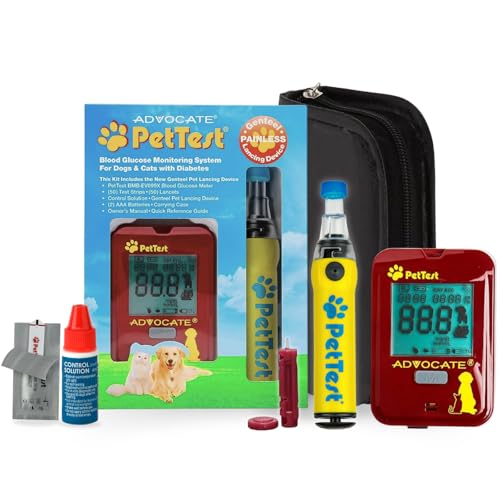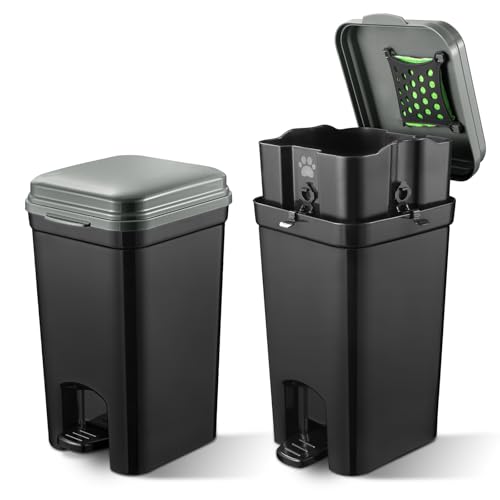
In this section, we delve into a comprehensive analysis of two prevalent methods for ensuring the safety and containment of our furry friends within designated areas. The aim is to explore the advantages and limitations of each approach, providing a clear understanding to help pet owners make informed decisions.
Initial Considerations: Before we proceed, it’s crucial to acknowledge that the choice between these two systems can significantly impact both the comfort of our pets and the effectiveness of their containment. Each system comes with its unique set of benefits and challenges, which we will meticulously examine to assist in the decision-making process.
Understanding the Basics: Both systems serve the primary function of limiting a pet’s movement to a specified zone. However, the underlying technology and implementation differ, influencing their efficiency and suitability for various environments and pet behaviors.
Understanding Boundary Systems for Canine Containment
In this section, we delve into the intricacies of two prevalent methods used to establish safe zones for our furry friends. Each approach has its unique characteristics and is suited to different needs and environments. By exploring these systems, we aim to provide clarity on how they function and what considerations one should take into account when choosing the most appropriate solution.
The Traditional Approach: Underground Boundary Systems
The conventional method involves the installation of an in-ground wire that outlines the designated area for the pet. This wire acts as a physical barrier, emitting signals that are picked up by a corresponding receiver worn by the animal. When the pet approaches the boundary, the receiver delivers a warning, typically a sound or a mild static correction, to deter the pet from crossing the line. This system is known for its reliability and customization, allowing for precise adjustments to the boundary layout and correction levels.
Key Benefits:
- Durability: The in-ground wire is protected from external elements, ensuring longevity.
- Customization: Owners can define complex shapes and areas to suit their property.
- Consistency: Provides a consistent signal strength, reducing the risk of accidental escapes.
The Modern Solution: Radio Frequency Containment Systems
In contrast, the more contemporary option utilizes radio frequency technology to create a virtual boundary. This system does not require any physical installation of wires. Instead, a central transmitter sends out a radio signal within a specified radius. The pet wears a collar that detects this signal and provides feedback when the pet nears the invisible boundary. This method is favored for its ease of setup and portability.
Key Benefits:
- Ease of Installation: No digging or burying wires, making it quick to set up.
- Portability: Ideal for renters or those who frequently change their living situation.
- Flexibility: Can be used in various locations without permanent modifications.
Understanding the fundamental differences between these two containment methods is crucial in making an informed decision that aligns with your specific circumstances and the needs of your pet. Each system offers distinct advantages, and the choice ultimately depends on factors such as the layout of your property, the temperament of your pet, and your personal preferences regarding installation and maintenance.
Installation Process: Wired vs. Wireless
In this section, we delve into the nuances of setting up two distinct containment systems for pets. Understanding the installation procedures of each can significantly influence your decision-making process. Let’s explore the practical aspects of both approaches.
Wired System Installation
The traditional approach involves burying a physical boundary wire around the perimeter of the area designated for the pet. This method requires careful planning and execution. It begins with mapping out the desired boundary, followed by digging a shallow trench to lay the wire. The process can be labor-intensive and may necessitate the use of appropriate tools to ensure the wire is buried at the correct depth. Once the wire is in place, it must be connected to a central control unit, which acts as the brain of the system, regulating the signals that guide the pet within the established limits.
Pros: Offers a customizable boundary shape, potentially more reliable signal strength, and less interference from external factors.
Cons: More time-consuming and potentially disruptive to your landscape.
Wireless System Installation
In contrast, the wireless option simplifies the setup process. This system operates through a transmitter that emits a circular signal field. The installation primarily involves placing the transmitter at a central location within the desired containment area and calibrating the signal radius. The pet wears a compatible receiver collar that interacts with the signal, alerting the pet when it approaches the boundary.
Pros: Quick and easy to set up, no need for landscape disruption, and portable for travel.
Cons: Limited to circular boundaries, can be affected by signal interference, and may require more frequent adjustments to ensure effective containment.
Ultimately, the choice between these two systems depends on your specific needs, the layout of your property, and your willingness to invest time and effort into the installation process. Each system has its unique advantages and challenges, making it crucial to consider these factors before making a decision.
Effectiveness in Containment
In this section, we delve into the comparative analysis of two popular methods designed to ensure the safety and boundaries of our furry companions. Understanding the efficacy of these systems is crucial for making informed decisions that align with the specific needs and behaviors of our pets.
The first approach involves a physical barrier system that relies on a continuous loop of wire buried around the perimeter of the designated area. This traditional method establishes a clear boundary that our pets are trained to recognize and respect. The system’s effectiveness is largely dependent on the proper installation and calibration of the wire, ensuring that the boundary is consistent and reliable.
On the other hand, the second method utilizes a transmitter-receiver setup that does not require any physical wire. Instead, it emits a signal that is picked up by a collar worn by our pet. When the pet approaches the predefined limits, the collar provides a corrective stimulus, guiding them back to the safe zone. This system offers flexibility in terms of boundary configuration and can be particularly useful for irregularly shaped areas or properties with challenging terrain.
Both systems have their own set of advantages and limitations. The physical barrier system is often seen as more reliable due to its tangible nature, but it may lack the adaptability of the transmitter-receiver system. Conversely, the latter offers greater convenience and ease of installation but may require more frequent adjustments to maintain optimal performance.
Ultimately, the choice between these two containment methods should be guided by the specific requirements of the pet and the layout of the property. Each system has the potential to be highly effective when implemented correctly and tailored to the individual needs of the pet.
Cost Comparison of Both Systems
In this section, we delve into the financial aspects of two popular containment solutions for pets. Understanding the initial investment and ongoing costs can significantly influence the decision-making process for pet owners. Let’s explore how these systems compare in terms of affordability and value.
Initial Investment
The upfront cost of implementing a containment system varies greatly depending on the type chosen. For instance, a traditional in-ground system typically requires a higher initial outlay due to the materials and labor involved in installation. This includes the purchase of the wire, transmitter, and possibly professional installation services. On the other hand, a portable containment solution offers a more straightforward setup, often involving just the purchase of a transmitter and receiver collar, which can be significantly less expensive initially.
Ongoing Expenses
Replacement Parts and Maintenance: Traditional in-ground systems may require occasional maintenance, such as repairing or replacing damaged wires. This can add to the long-term costs. Conversely, portable systems might necessitate the replacement of batteries in the receiver collar more frequently, which is a recurring expense to consider. However, the simplicity of the portable system often means less maintenance overall.
Training Costs: Both systems might require some form of training for the pet. While this is not a direct cost of the system itself, it is an important consideration. Traditional systems might require more intensive training due to their static boundaries, whereas portable systems often come with simpler training protocols, potentially reducing the need for professional training services.
In conclusion, while the traditional in-ground system might have a higher upfront cost, it could offer more durability and less frequent maintenance. The portable system, though initially cheaper, may incur more regular expenses related to battery replacements. Each pet owner must weigh these factors based on their specific needs and budget constraints.
Maintenance Requirements for Each Type
In this section, we delve into the upkeep necessities of two distinct containment systems. Understanding these maintenance aspects is crucial for ensuring the longevity and effectiveness of these solutions. Each system has its own set of requirements that users must adhere to in order to maintain optimal functionality.
Cabled Containment System: The maintenance for this type involves regular checks on the physical integrity of the cables. It’s important to inspect for any damage, such as cuts or breaks, which could compromise the system’s performance. Additionally, ensuring that the cables are buried at the correct depth helps prevent accidental damage from lawn mowers or other garden tools. Weather conditions can also affect the cables, so periodic checks after storms or heavy weather are advisable.
Radio Frequency Containment System: This system typically requires less physical maintenance compared to its cabled counterpart. The primary focus here is on the battery life of the receiver collar. Regularly replacing or recharging the batteries is essential to keep the system operational. It’s also beneficial to clean the contact points on the collar to ensure proper communication with the pet’s skin. Software updates for the transmitter might be necessary from time to time to maintain the system’s efficiency and to address any potential issues.
Both systems require a degree of attention to ensure they function correctly and safely. By adhering to these maintenance guidelines, users can extend the lifespan of their containment systems and ensure a secure environment for their pets.
User Experience and Pet Comfort
In this section, we delve into the nuances of how different containment systems impact both the owner’s experience and the comfort of their furry companion. Understanding these aspects is crucial for making an informed decision that balances convenience with animal welfare.
Owner Convenience: When considering the practicality of various pet containment solutions, it’s essential to evaluate how they integrate into daily routines. Wired systems often require more physical installation effort, potentially disrupting landscaping and requiring a significant initial setup time. On the other hand, their wireless counterparts offer a quicker, less invasive installation process, which can be particularly appealing for those who value simplicity and minimal impact on their property.
Pet Comfort: The well-being of our pets is paramount. Some animals may react more sensitively to certain containment methods. For instance, pets might feel more secure with a physical boundary that they can visually and physically perceive, which is often the case with wired systems. Conversely, wireless options provide a more flexible and less restrictive environment, which can be beneficial for pets that are more anxious or require a greater sense of freedom.
Safety Considerations: Both types of systems come with safety features, but their effectiveness can vary. Wired systems are generally considered more reliable in terms of boundary consistency, which can prevent pets from accidentally crossing the designated area. Wireless systems, while convenient, might experience interference that could temporarily disrupt the signal, potentially confusing the pet. It’s important to weigh these factors based on the specific needs and behaviors of your pet.
Ultimately, the choice between these two types of containment systems should be guided by a careful consideration of both the owner’s lifestyle and the pet’s comfort and safety. Each system has its own set of advantages and drawbacks, and understanding these can help ensure a harmonious and safe environment for your beloved companion.





